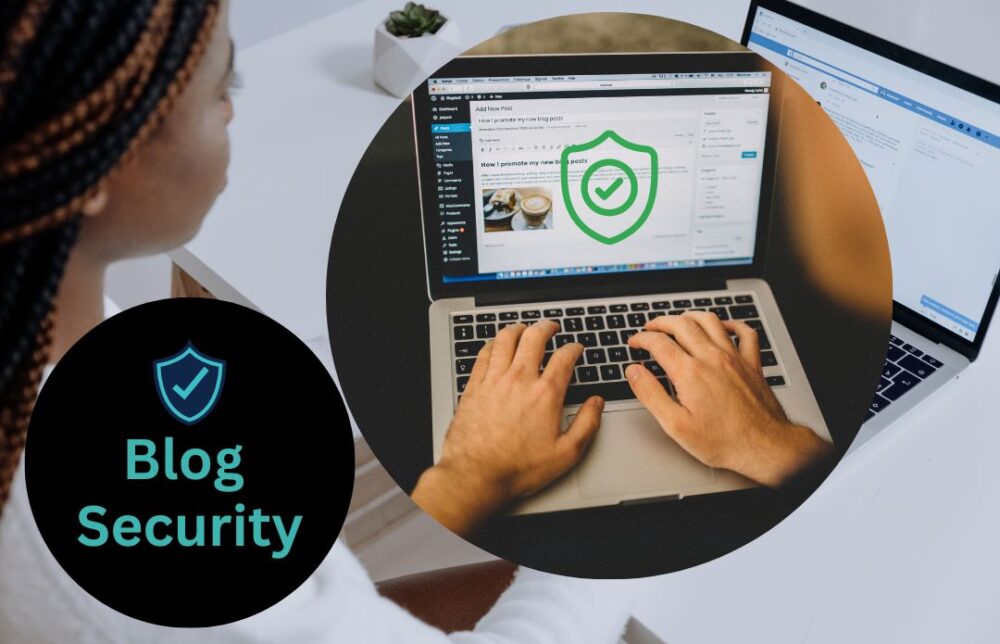Do you feel like your blog is under attack? Are you worried about malicious hackers and their aim to infiltrate your blog's security?
When it comes to blogging, security should be one of your top priorities. You’ve spent a great deal of time and energy creating meaningful, interesting content for your blog, and you want to protect it from malicious attacks. In this guide, we’ll go over how you can ensure the safety and security of your blog, from start to finish.
We’ll cover the basics of staying safe online, such as choosing secure passwords and keeping sensitive information private. We’ll also discuss more advanced topics related to website security, such as hacking prevention techniques and malware protection tools.
Finally, we’ll provide some practical tips that you can use right away to get started on securing your blog against potential threats.
How To Build Blog Security for Protecting Your Asset
1. Why Blog Security
Blog security is essential to the protection of online content and the data associated with it. Blogs are an incredibly useful platform to store and share content, so it’s important to ensure that they are protected from spam, intruders, and viruses.
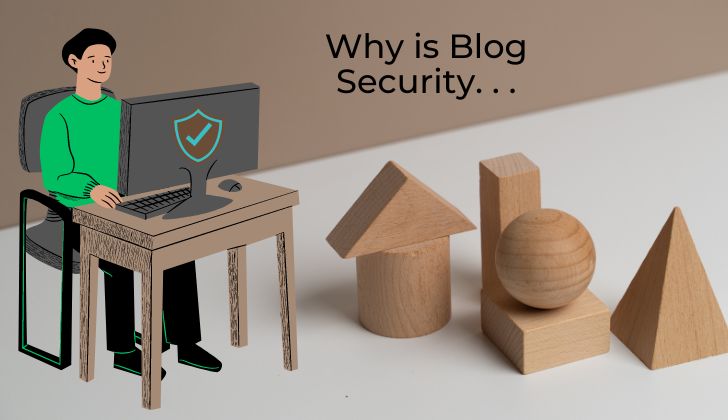
Learn the reasons from case studies around the web!
Without adequate blog security, users may be vulnerable to having their information accessed without authorization or malicious posts being linked to their blog without their knowledge.
Neglecting blog security can be disastrous for individuals, businesses, and organizations as it can lead to data loss or financial implications.
Some of the potential consequences for failing to ensure your blog security include:
- A dip in search engine rankings
- Losing out on potential customers due to hacked content
- Having confidential customer information breached
Additionally, a lack of proactive measures can lead to your blog becoming open for attackers with malicious intent who could use such an access point as an opportunity for cybercrime activities like spamming or DDoS attacks which could bring down your entire network if not detected quickly enough.
By understanding the risks associated with inadequate security on blogs and being aware of potential threats that could infiltrate your system, you can take measures ahead of time and protect both data and content associated with your sites.
2. Know the Potential Security Risks
The security risks and potential threats to blogs can be quite varied, including malware and malicious code, denial of service attacks, and identity theft.
It is important to stay informed on the latest cybersecurity trends so that you can make sure you are taking the necessary precautions to protect your blog from these potential risks.
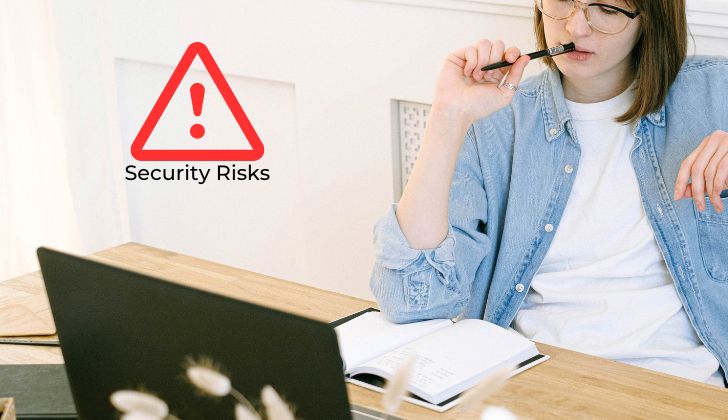
First, define your potential blog security risks!
Malware and malicious code can present a risk if you allow user-generated content or allow for third-party integration on your blog.
This type of code or application may have hidden files that can collect data, harvest contact information, or even contain viruses.
Utilizing strict application review procedures is essential for preventing malicious code from infiltrating your website.
Denial of service (DoS) attacks are a type of attack that seeks to overwhelm the target by flooding it with requests and consuming its resources, making it inaccessible to legitimate users.
Taking the proper steps to harden server infrastructure can help reduce the risk of such an attack, like implementing firewalls and configuring web applications to detect excessive requests.
Identity theft occurs when a cybercriminal uses stolen credentials (such as username/password combinations) to gain access to sensitive information about an individual's online accounts without their consent or knowledge.
It is important that sites securely encrypt connection data using Transport Layer Security (TLS) technology which will help protect personal information from being viewed by malicious third parties during transmission.
Passphrases should always be used in place of passwords since they offer better defense against brute force attacks like keylogging and phishing attempts, in which hackers try to obtain access by posing as someone else on social media networks and websites.
3. Secure Your Blog from Hacking
Whether you've got started a new blog or have been maintaining a blog is generally a safe activity, but there are certain risks associated with being connected to the internet.
As with any other digital device, your blog can be vulnerable to hackers who want access to your personal information or malicious software that could damage the data on your platform. To protect yourself, you must understand the basics of blog security and take steps to prevent unauthorized access.

Unshakable passwords and 2FA are surefire parts of blog security!
Below are a few simple tips you can use to make sure your blog is secure:
(1) Make sure all passwords are strong
Strong passwords should include at least 8 characters, consisting of upper and lowercase letters, numbers, and symbols. Don’t use words that could be easily guessed such as your name, pet’s name, or address. Using a password manager like Google or LastPass is highly recommendable.
Also, make sure not to use the same password for all of your online accounts—each one should be different as hackers will try several common account combinations when attempting to break into an account.
(2) Secure with two-factor authentication
Two-factor authentication (2FA) requires two pieces of evidence or authentication factors to access the platform – something you know (your password) and something you have (your secondary authentication key).
This could be a text message or email sent out each time someone attempts to log into your account from an unknown device, allowing you to notify law enforcement if there is unauthorized activity on it.
(3) Monitor suspicious activity
Regularly check all areas of content posted onto blogs such as comments from readers and messages from anonymous sources asking for personal information – these may indicate someone has attempted a hacking attack on your website.
Use a best anti-virus software. It is also important that any new files downloaded onto your computer have been scanned for viruses and malware before they are accessed by users on the platform – this will help keep hackers away from accessing sensitive information stored in those files.
(4) Keep software up-to-date
It’s always important to keep software up-to-date because these updates usually include security patches that help keep hackers out of your system.
Make sure any third-party plugins used by blogs are kept updated as well – look out for notifications regarding changes made in these plugins as they may contain bugs that can lead to liability issues if not caught and patched quickly.
4. Protect Your Blog Against Malware Attacks
Malicious software attacks are a common threat to web surfers and blog owners. Cybercriminals use these attacks to gain access to sensitive information or to disrupt the operation of a website or blog. To protect your blog from malware, you must stay informed on the latest security threats and preventive measures.
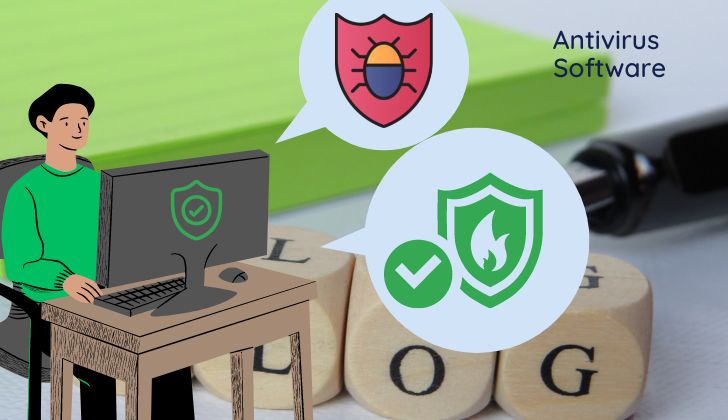
Antivirus software is an essential part of PC-level blog security!
To minimize the risks posed by malware, there are various steps you can take including:
Use strong passwords for all websites and blogs that you access. Choose a mix of alphanumeric characters for optimum protection. Change passwords regularly and store them in secure password managers like LastPass or Dashlane.
Keep your web browser updated with the latest security patches. Outdated browsers are more vulnerable to attacks from malicious software.
Install protective firewall and antivirus software on all connected devices used by yourself and other members of your staff, including computers, tablets, smartphones, and any other internet-enabled device.
Ensure that software updates are always installed promptly when released by the manufacturers as they may contain important security patches as well as bug fixes.
Regularly monitor your site’s traffic using Google Analytics so that you can detect any suspicious activity before it causes too much damage to your blog or site’s reputation.
Limit user access to server files or programs so that unauthorized personnel cannot make changes that might compromise your website security levels or data privacy policies.
Back up all critical files related to your website’s operation on an external hard drive/cloud service at regular intervals in case of an emergency due to an attack from malicious software such as viruses, worms, Trojans, etc.; this is useful if you need to restore information after a cyberattack has taken place on your blog/website's infrastructure.
5. Secure Your Blog from Spam
When it comes to ensuring the security of your blog, it is important to not only protect your content and comments from unauthorized access but also to keep out spam. While some amount of spam is inevitable on blogs and websites, there are steps you can take to mitigate the issue and protect yourself against malicious intent.
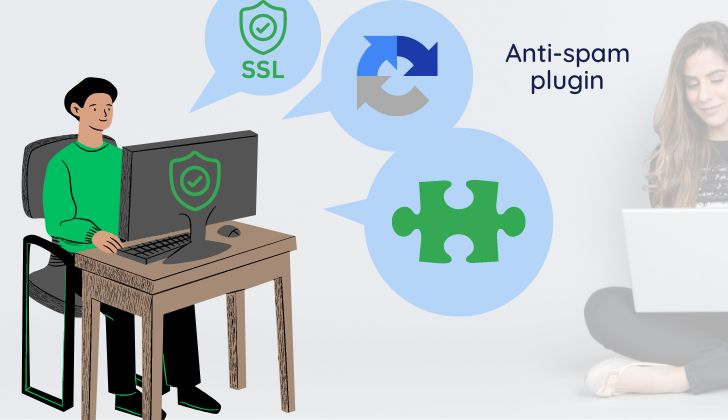
If you’re looking for ways to reduce the amount of spam on your blog or website, here are some tips:
(1) Moderate comments
Allowing users to leave comments without moderation may lead to unwanted comments and even open up the possibility for malicious content that could damage your reputation or compromise security. Moderation will help you stay in control of what gets posted while giving legitimate visitors a chance to share their input.
(2) Install an anti-spam plugin
Utilizing an Anti-virus or Anti-Spam plugin on your blog helps by automatically filtering out irrelevant or malicious content from appearing on your pages.
(3) Integrate CAPTCHAs
Including CAPTCHAs helps prevent automated spambots from posting unwanted content on your pages by requiring users to solve a challenge before submitting a comment or signup form.
(4) Take advantage of security features
Many blogging platforms like WordPress come with built-in features like hardening techniques which can be enabled to help protect against potential attacks and information breaches. Other free security plugins may also be available depending on the blogging platform you’re using.
These tips should help get you started in securing your blog and protecting it from spam content. In addition, using encrypted connections such as SSL/TLS support (HTTPS) along with periodic backups will go a long way towards ensuring the safety of both you and anyone who visits your site!
6. Ensure Data Security
Having a secure blog is an important part of blogging. You want to make sure that the data stored on your blog is protected from hackers, viruses, and other malicious threats. To ensure your blog's data security, here are some tips you should consider:
(1) Use strong passwords
Strong passwords are essential for securing any online account, including your blog. Choose passwords that contain a combination of upper and lower case letters, numbers, and special characters such as @#$%^&*(). For extra security use two-factor authentication when available.
(2) Keep software updated
Update all software associated with your blog regularly to ensure that the latest security patches have been installed. This includes themes and plugins used by WordPress or other blogging platforms you use.
(3) Use an SSL certificate
Get an SSL certificate for your blog so web traffic is transmitted securely between servers and browsers over HTTPS protocol instead of HTTP protocol. This adds an extra layer of protection to keep hackers at bay.
(4) Monitor activity closely
Pay attention to the dashboards of each tool in use on your blog as well as any logs generated from user interactions with it, such as login attempts or changes in permissions settings, etc. This gives you an early warning about any suspicious activity happening on your website so that you can take action quickly if needed before it becomes too late to fix it.
(5) Backup regularly
Save regular backups of both website files and database files in another secure server or location offsite so that even if something happens to the main server storing the data, the backups can still be accessed by restoration processes if necessary.
This way even if you are ever hacked or compromised on one level, there is still a safety net of secure data elsewhere that can be used as a fallback position while restoring things safely & securely again.
Last Thoughts
Securing your blog should be a priority if you are taking your blog seriously. Security risks can cause significant harm to a blog in terms of both reputation and finances. It is important to assess the risk factors and take proactive steps to protect your website from these threats.
Especially, you should keep security in mind when setting up your blog. Update software, use strong passwords and two-factor authentication wherever possible, back up data regularly, use secure content delivery networks (CDN) for sensitive data retrieval.
Also, utilize the cloud or web-hosted solutions for large media files, block malicious traffic using .htaccess files or security plugins, and use appropriate security tools like WAFs or IPS to protect against automated attacks are all common measures utilized by bloggers to ensure maximum website security.
Additionally, always connect to Wi-Fi networks securely and monitor activity logs to ensure suspicious activity is spotted quickly. Following these guidelines will help protect your blog against most security threats.

